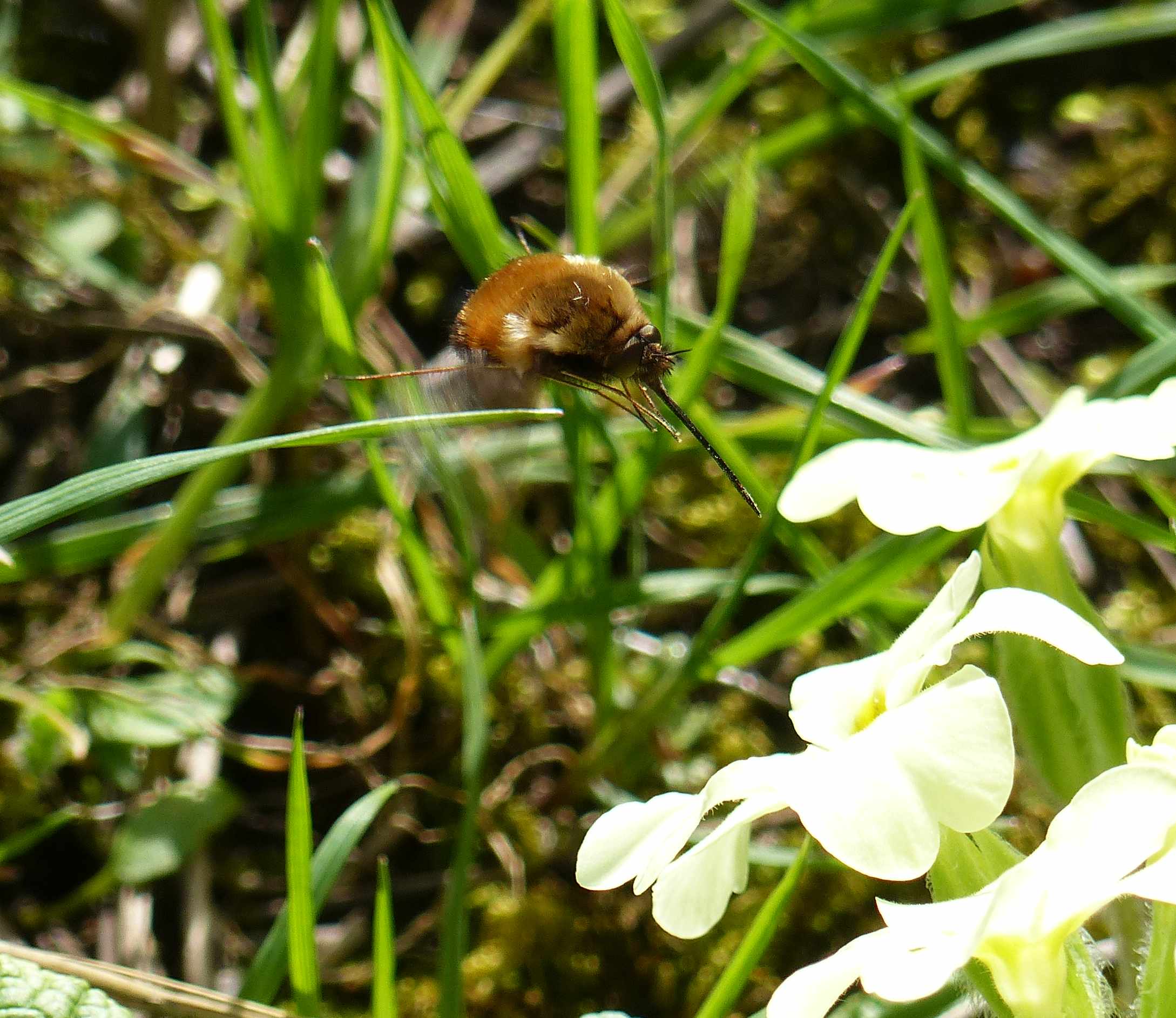Butterflies & moths in St Giles Hill Graveyard
Several butterflies make their home in St Giles Hill Graveyard. Some species are seen throughout the year like Red admiral, Peacock, Comma, Brimstone and Speckled wood. Whist others are restricted to specific months like Orange tip and Meadow Brown.

Male Orange tip
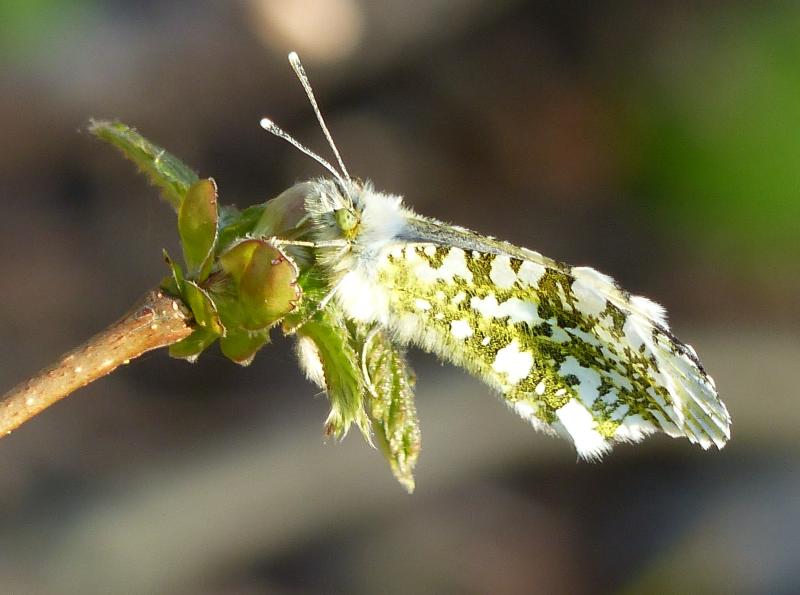
Female Orange tip
The Orange tip (Anthocharis cardamines) bis an indicator of Spring. The adult Orange tip can generally be seen from May and June. The male has unmistakable orange tips and the females are white with a mottled green underwing. It occurs in the graveyard because one of the caterpillar's food plants is Garlic Mustard which grows in the shade of the Lime trees. The lavea eat several other crucifer (Brassica) types, particularly Cuckooflower (Cardamine pratensis) but also Hedge Mustard (Sisymbrium officinale), Large Bitter-cress (C. amara), and Hairy Rock-cress (Arbis hirsuta) among others.
Stinging Nettle lovers.
Whilst good sources of nectar are important to the adult butterfly (Imago) the larval stage is generally pickier. For instance Peacock, Red admiral, Comma and Small Tortoise live predominantly on Common Nettle (Urtica dioica) although Small Nettle (U. urens) and Hop (Humulus lupulus) and sometimes used.
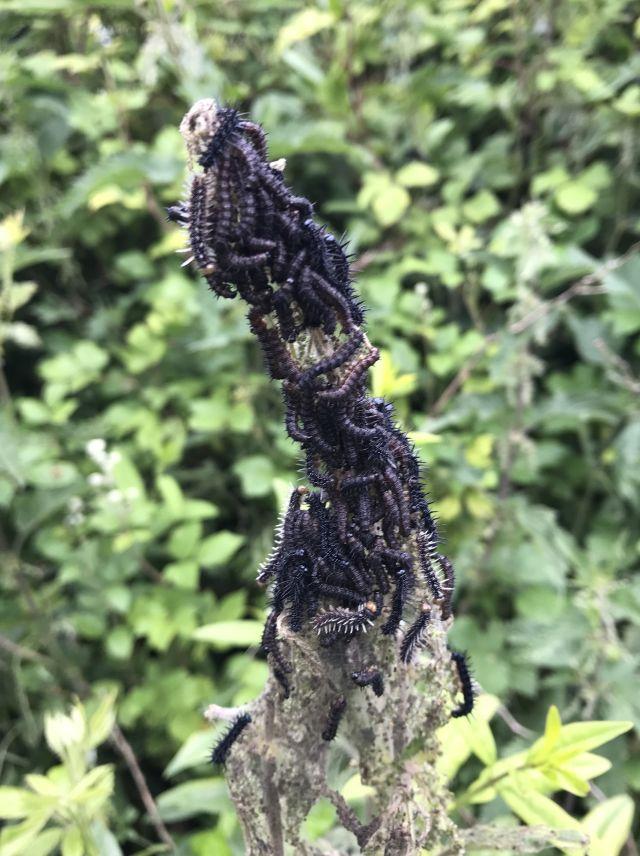
Peckock larval group
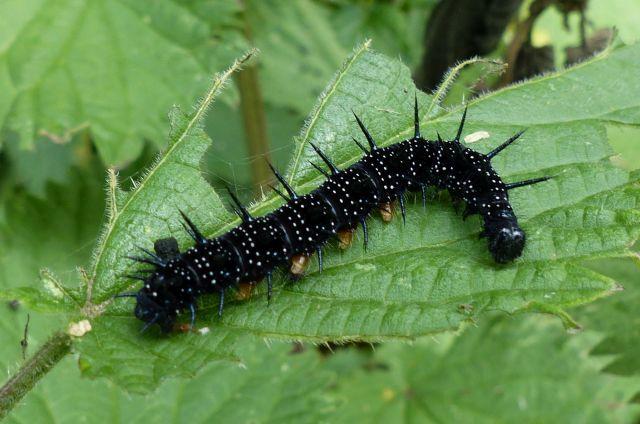
Peckock caterpillar

Peacok
The Peacock butterfly (Aglais io) can be seen for much of the year depending on the weather. The female of this butterfly lays most of her eggs in one location. The spiky caterpillars all hatch together and build a weblike house.
On the other hand, the Red Admiral female lays a single egg at many locations on the same Common Nettle host plant. The hatched larvae make tents from rolled-up nettle leaves. The tiny, ribbed egg of a Red admiral sitting on a Nettle leaf.
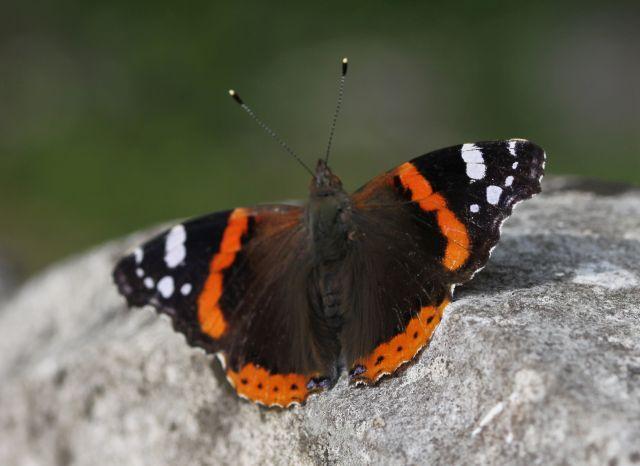
Red Admiral

Red admiral egg

Red Admiral larval tent
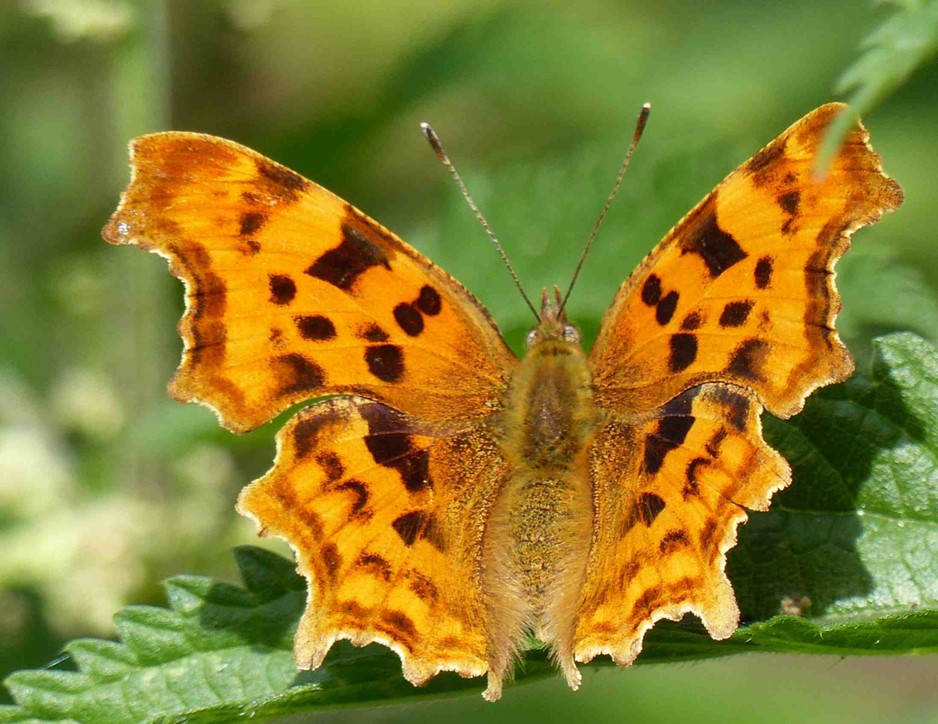
Comma
Summer butterflies
The most prominent Midsummer butterflies are Gatekeeper and Meadow Brown.
The adult Gatekeeper (Pyronia Tithonus) flies from early July into September. It prefers tall grass and whilst happy near shrubs and trees does not like full woodland. In the graveyard, you are more likely to see it in open areas closer to Alresford Road. The caterpillars are not as fussy as some and eat various grasses, with a preference for the fine grasses such as bents (Agrostis spp.), fescues (Festuca spp.), and meadow-grasses (Poa spp.). However common Couch (Elytrigia repens) is sometimes used and there are probably others.
The adult Meadow brown (Maniola jurtina) has a flight period similar to that of the gatekeeper through July and September. The Laval caterpillars also feed on grasses, preferring finer grasses like fescues (Festuca spp.), bents (Agrostis spp.) and meadow-grasses (Poa spp.). They also eat coarser species of grass such as Cock's- foot (Dactylis glomerata), Downy Oat-grass (Helictotrichon pubescens), and False Brome (Brachypodium sylvaticum).
The Ringlet (Aphantopus hyperantus) is another butterfly that flies in July and August. Its caterpillars eat coarser grasses such as Cock's-foot (Dactylis glomerata), False Brome (Brachypodium sylvaticum), Tufted Hair-grass (Deschampsia cespitosa), to name a few. This butterfly favours tall grass along Woodland rides and glades where there is partial shade and damp.
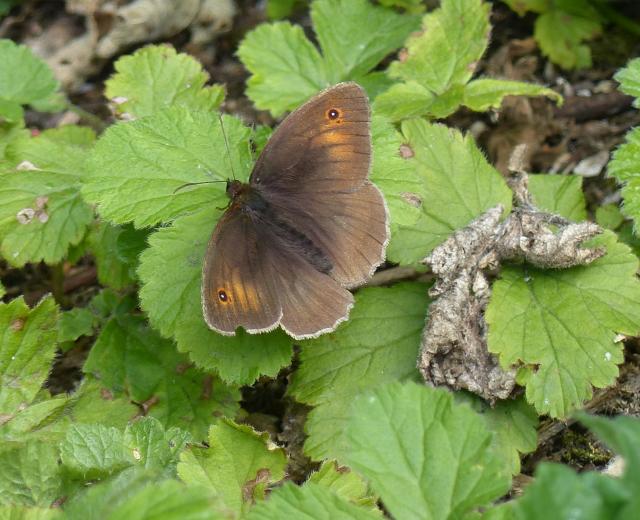
Meadow brown
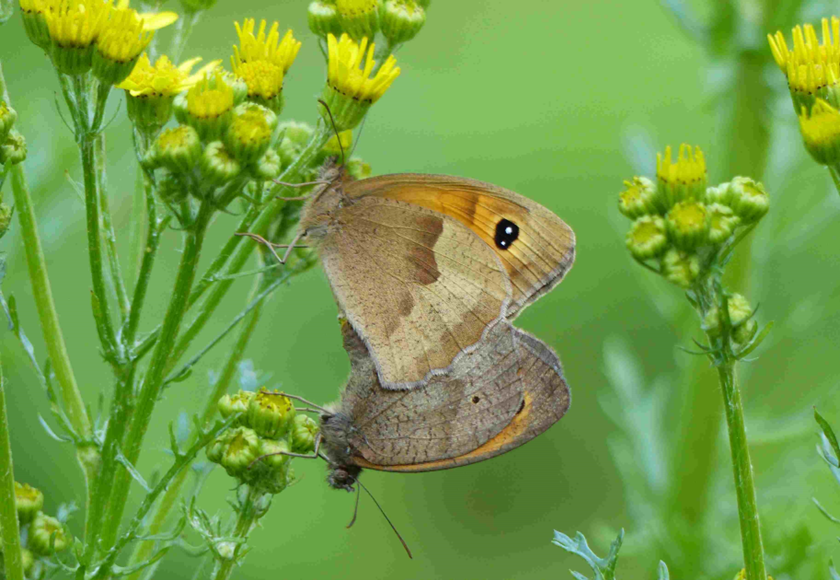
Gatekeeper
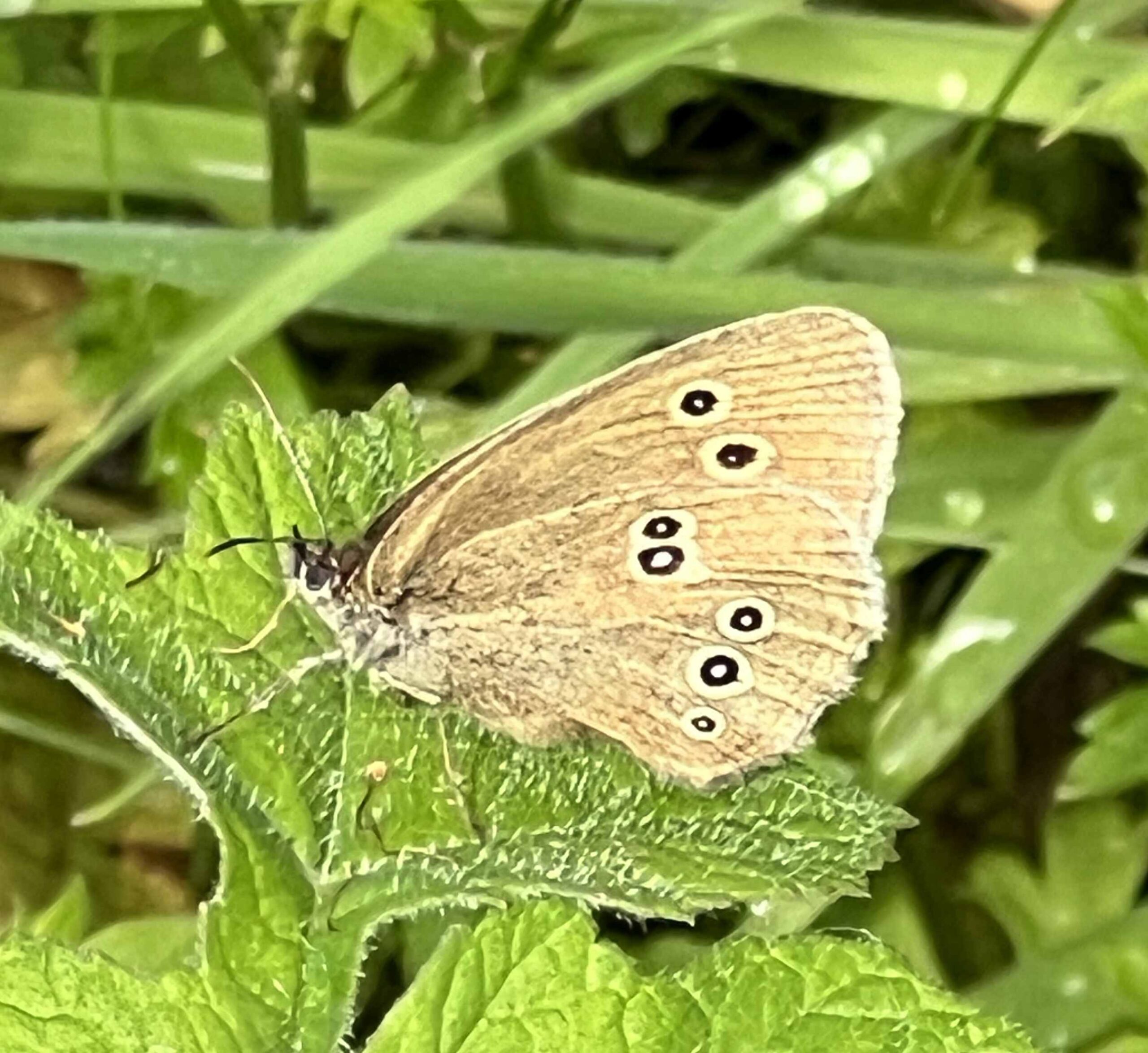
Ringlet
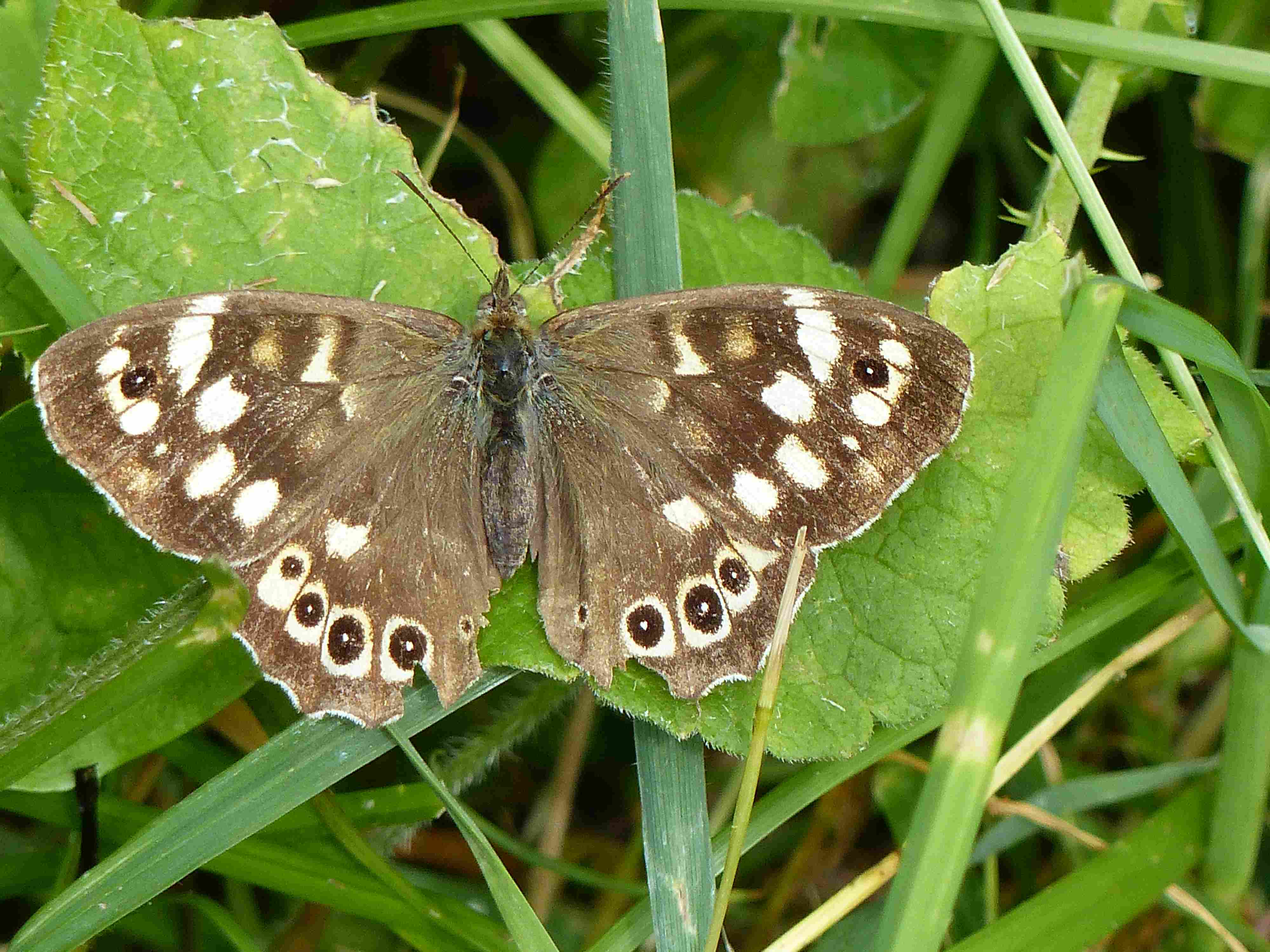
Speckles wood
The Speckled Wood (Pararge aegeria) lives in partially shaded woodland and hedgerows with dappled sunlight. They feed on aphid honeydew in the treetops. In St Giles Hill Graveyard they can be seen in the wooded sections from April to October (they have three broods). The caterpillar food plants are grasses False Brome (Brachypodium sylvaticum), Cock's-foot (Dactylis glomerata), Yorkshire-fog (Holcus lanatus) and Common Couch (Elytrigia repens).
Adult Small White Pieris rapae) and Large White (Pieris brassicae), collectively known to the gardener as Cabbage white can be seen from April to the end of September. They have 2 broods with a lull in July. The caterpillars especially like cabbage in gardens. But they also eat wild crucifers such as Hedge Mustard (Sisymbrium officinale), Garlic Mustard (Alliaria petiolata) that occur in St Giles Hill Graveyard.
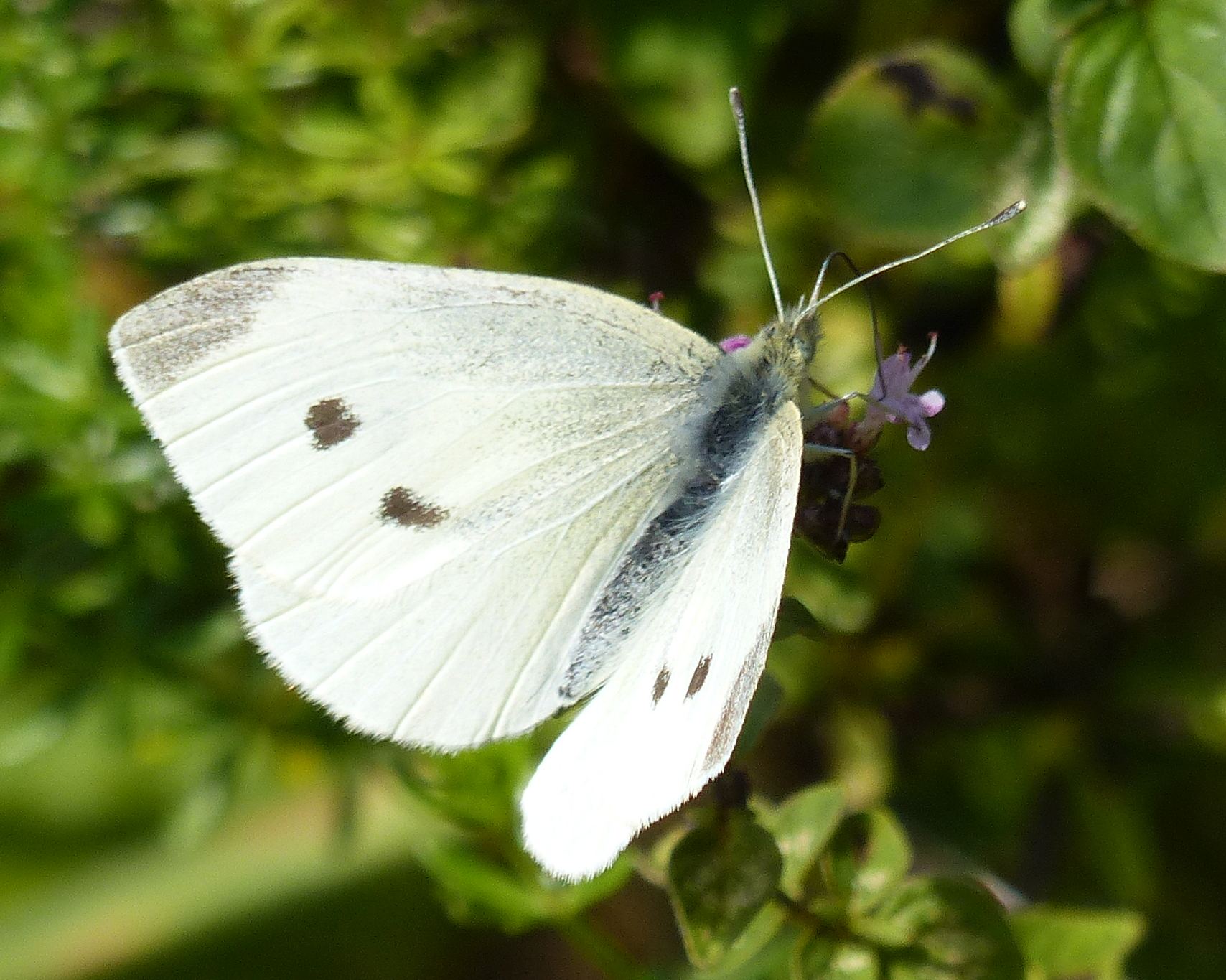
Small White
Moths and other things
One of the highlights of our activity in St Giles Hill Graveyard is the development of two colonies of Striped Lychnis (Shargacucullia lychnitis). This moth is a UK BAP (Biodiversity Action Plan) Priority Species and is being encouraged by WCC. The larvae were first observed in late July 2022. The adult moth is rarely seen as it is nocturnal. It is more likely to be seen in the larval stage owing to the striking colour of the caterpillars. The larvae should not be confused with those of the Mullein moth (Cucullia verbasci). Both have black spots but the Striped lychnis caterpillar has a clear band of pale green between each segment. If unsure timing can help as Striped Lychnis caterpillars feed from July to mid-September, and The Mullein from late May to July. They will both be found on Mulleins (Verbascum) the caterpillar food Plants, but Striped Lychnis have a strong preference for Dark Mullein (Verbascum nigrum). The Mullein moth can be found on a variety of Mulleins. Both overwinters as a pupa, on or just below the ground surface.
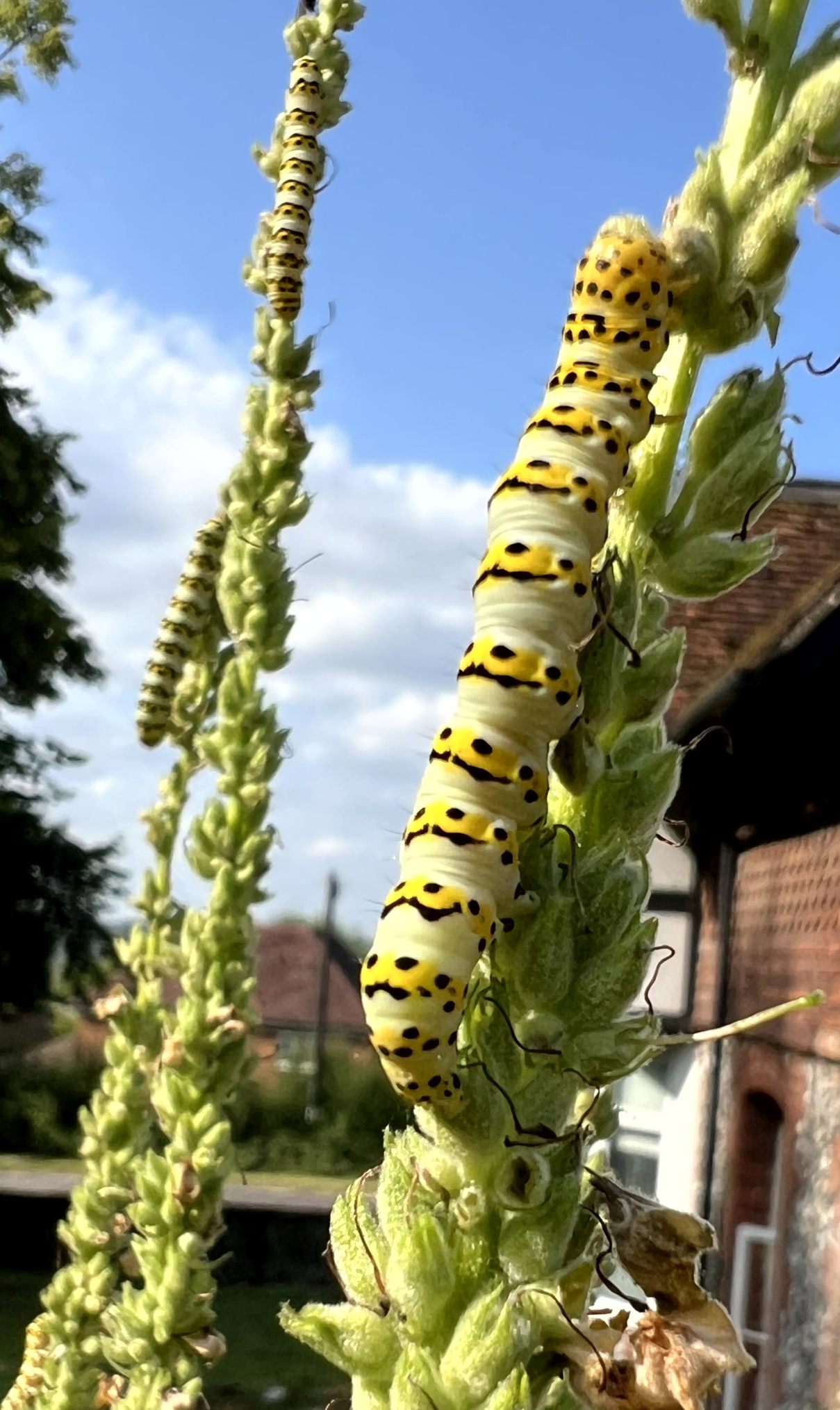
Striped Lychnis (Shargacucullia lychnitis)
The Cinnabar (Tyria jacobaeae) moth adult moth is unmistakable with its red colour but the caterpillars, also unmistakable, are more often seen. They feed on the leaves and flowers of Common Ragwort (Senecio jacobaea) on which they can sometimes be seen in St Giles Hill Graveyard. The illusive adult Cinnabar moth can be seen from May to August.
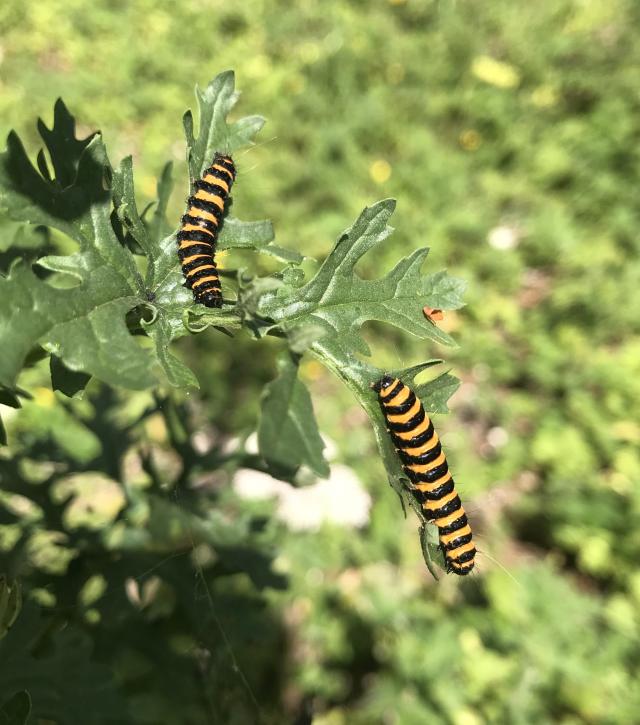
Cinnabar moth caterpillars
Spring Bee-flies
The Bee-fly is a good indicator of early spring. They feed on violets and primrose pollen and nectar in March and April with their long proboscis. Although they look like bees they are flies. There are four species of bee-fly in Britain of which we have two; the Dark-edged Bee-fly (Bombylius major) and the Dotted Bee-fly (Bombylius discolor). The most common is the dark-edged bee-fly which as the name suggests has a dark edge to its wings. Its body is tawny-brown. The dotted bee-fly has spots on the wing and a body coloured a mix of chestnut and black. The female has a line of white spots on the abdomen. The flight times are March to May or June most frequent in April. Bee-flies are parasites and lay their eggs in the nests of Andrena mining bees that dig tiny burrows in the ground. The bee-fly larvae hatch out and wait until the bee larvae are big enough to eat
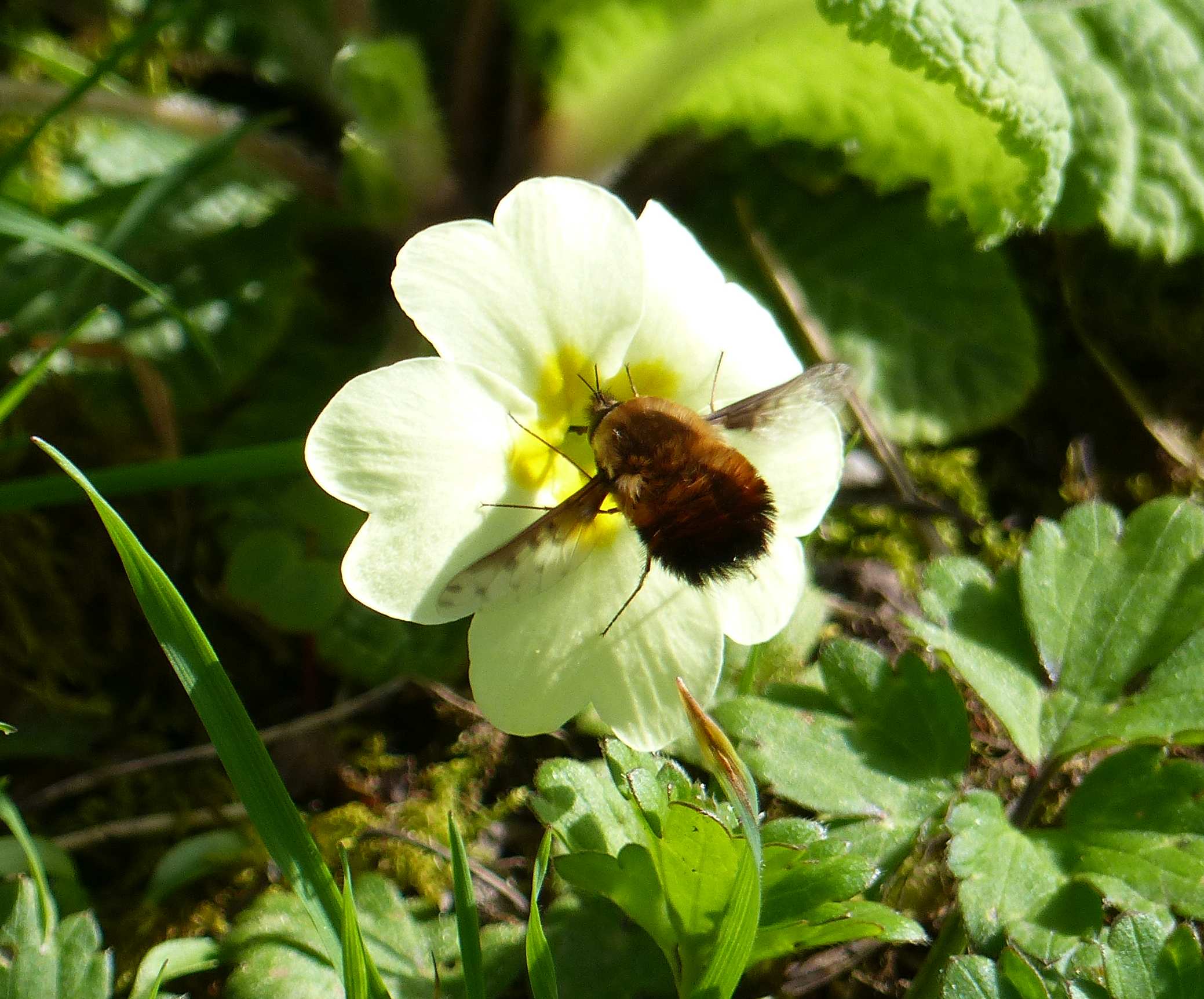
Dotted bee-fly
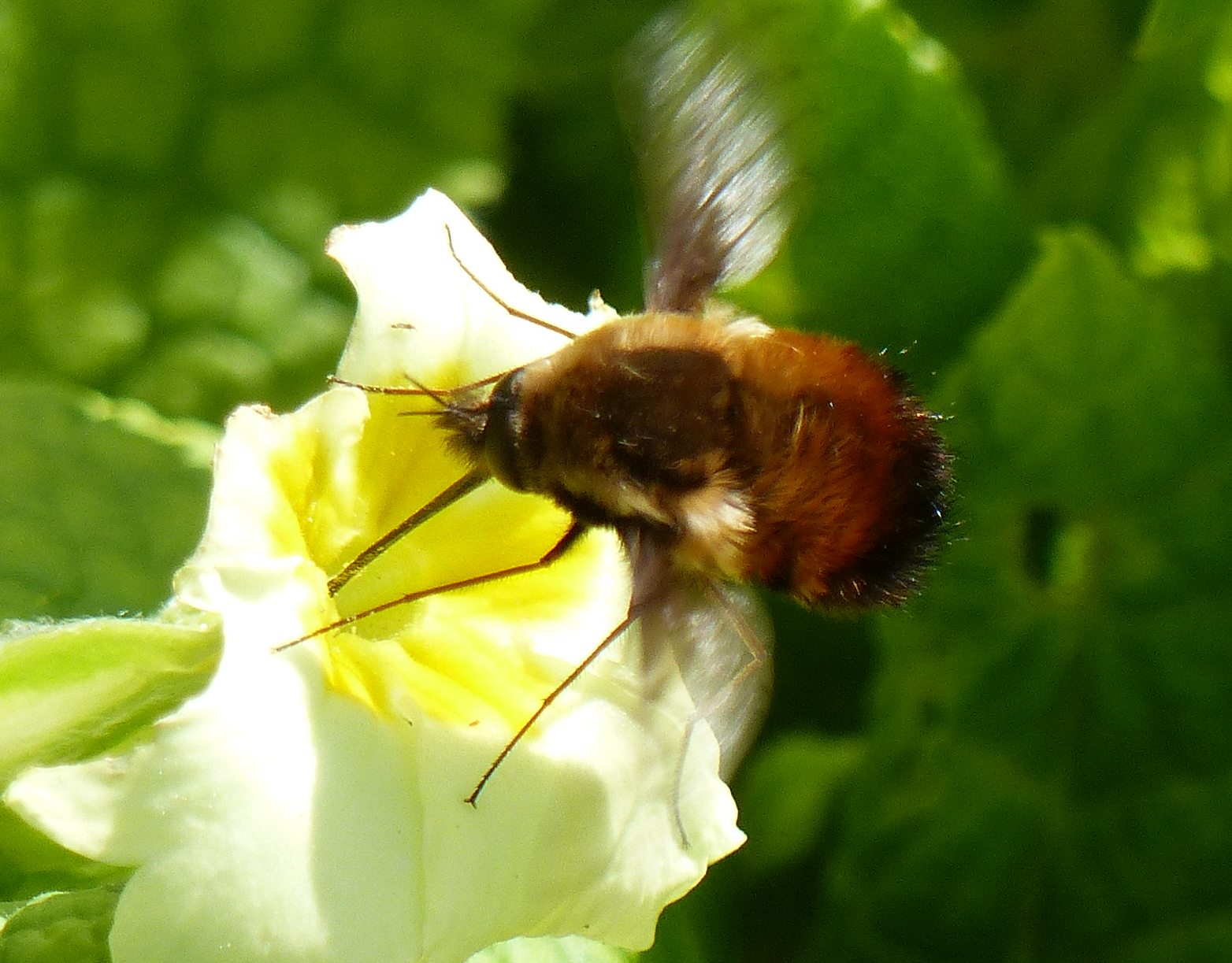
Bee-fly nectaring
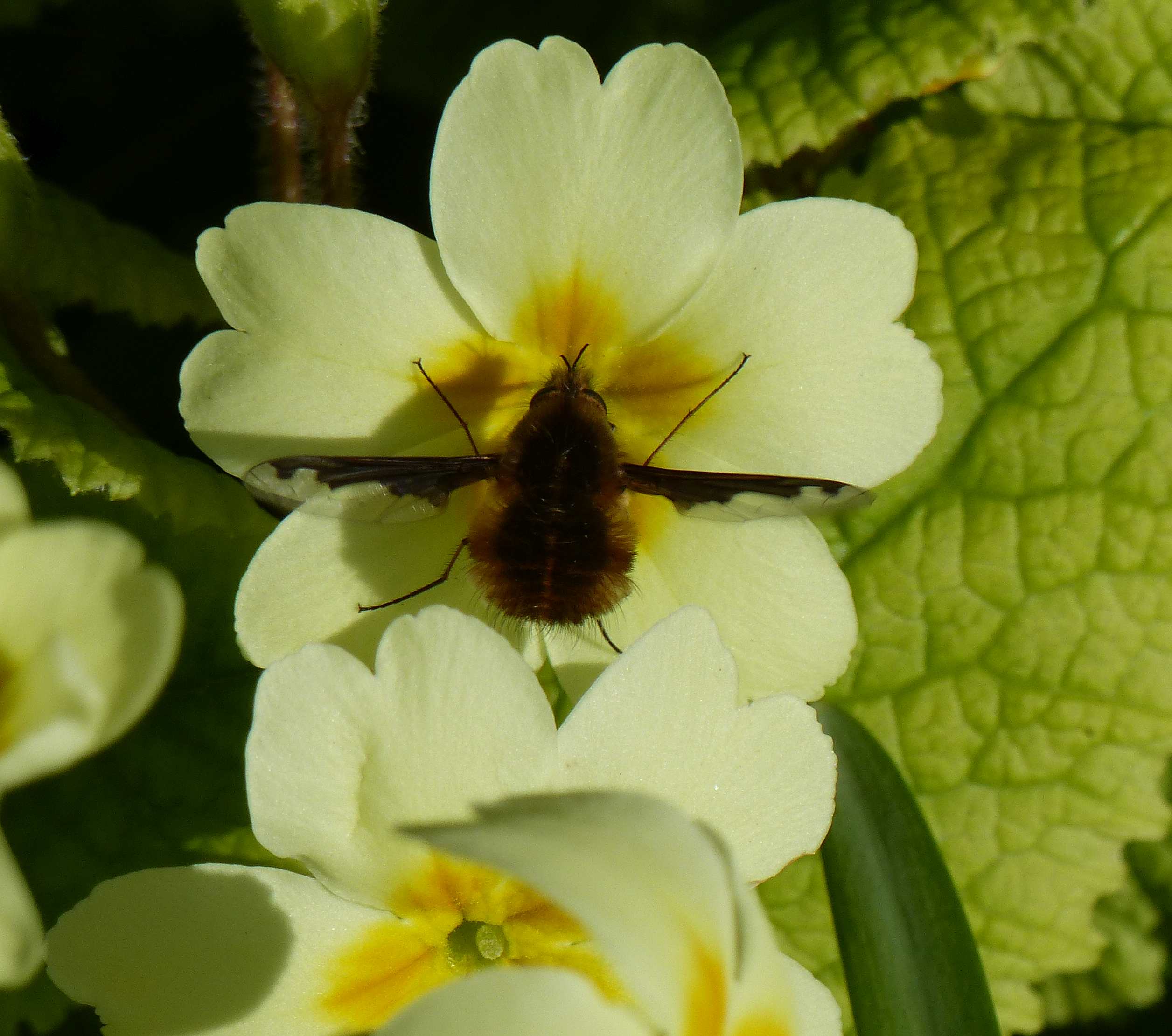
Dark-edged bee-fly
